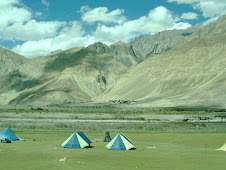
| Location: | Approximately 47 km from Leh |
| Belongs To: | Dugpa Order |
| Founded By: | First incarnation of Stagsang Raspa Nawang Gyatso |
| Founded In: | 1630 |
| Appeals: | Biggest and wealthiest monastery in Ladakh |
| Festivals: | Annual Hemis festival, Sacred Dance Festival |
Hemis Monastery holds the distinction of being the biggest as well as the wealthiest monastery of Ladakh. It dates back to the year 1630 and was founded by the first incarnation of Stagsang Raspa Nawang Gyatso. Hemis Monastery is positioned inside a gorge, at a distance of approximately 47 km from Leh. Belonging to the Dugpa Order, it stands on the western bank of the Indus River. The monastery also boasts of a very rich collection of ancient relics.
The array of items kept inside the monastery consist of a copper-gilt statue of the Lord Buddha, various gold and silver stupas, sacred thankas and several other exquisite objects. Situated slightly higher than the Hemis Gompa of Leh Ladakh, is a sacred hermitage, founded by Gyalwa Kotsang. The meditation cave of Gyalwa, along with his footprints and handprints on the rock and sacred shrines, still bring back his memories to life.
The Hemis Monastery also serves as the venue of an annual festival, known as the Hemis Festival. This festival is celebrated as a commemoration of the birth anniversary of Guru Padmasambhav. On the day of the Hemis Festival, the thangka of the monastery is displayed, with a gap of twelve years between successive displays. The Thanka is the sacred appliqué-work tapestry wrought with pearls, which depicts Guru Padmasambhava.
And not to be forgotten is a sacred mask dance that is performed at the monastery every year. The dance takes place on 9th and 10th day of the fifth month of the Tibetan calendar.













